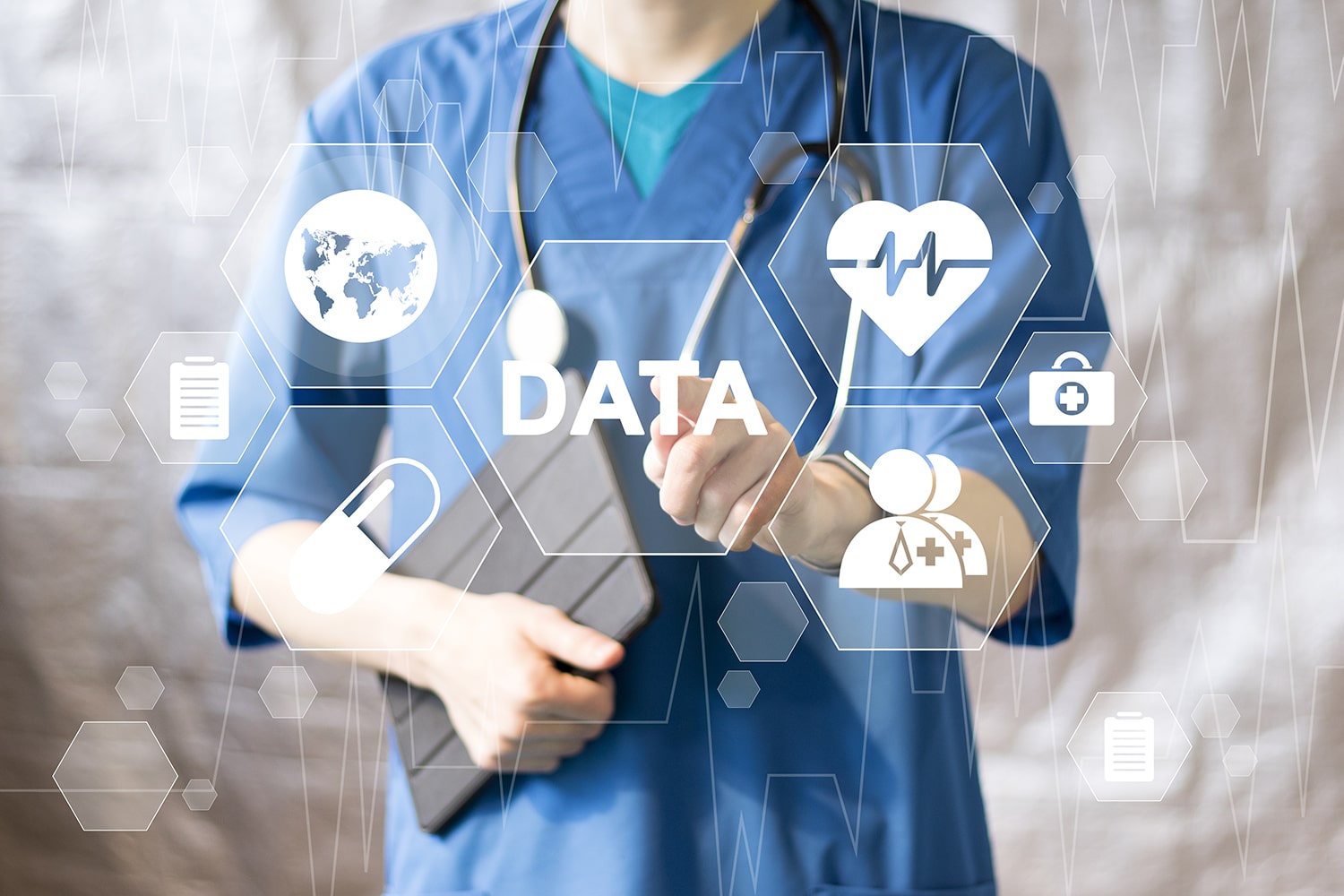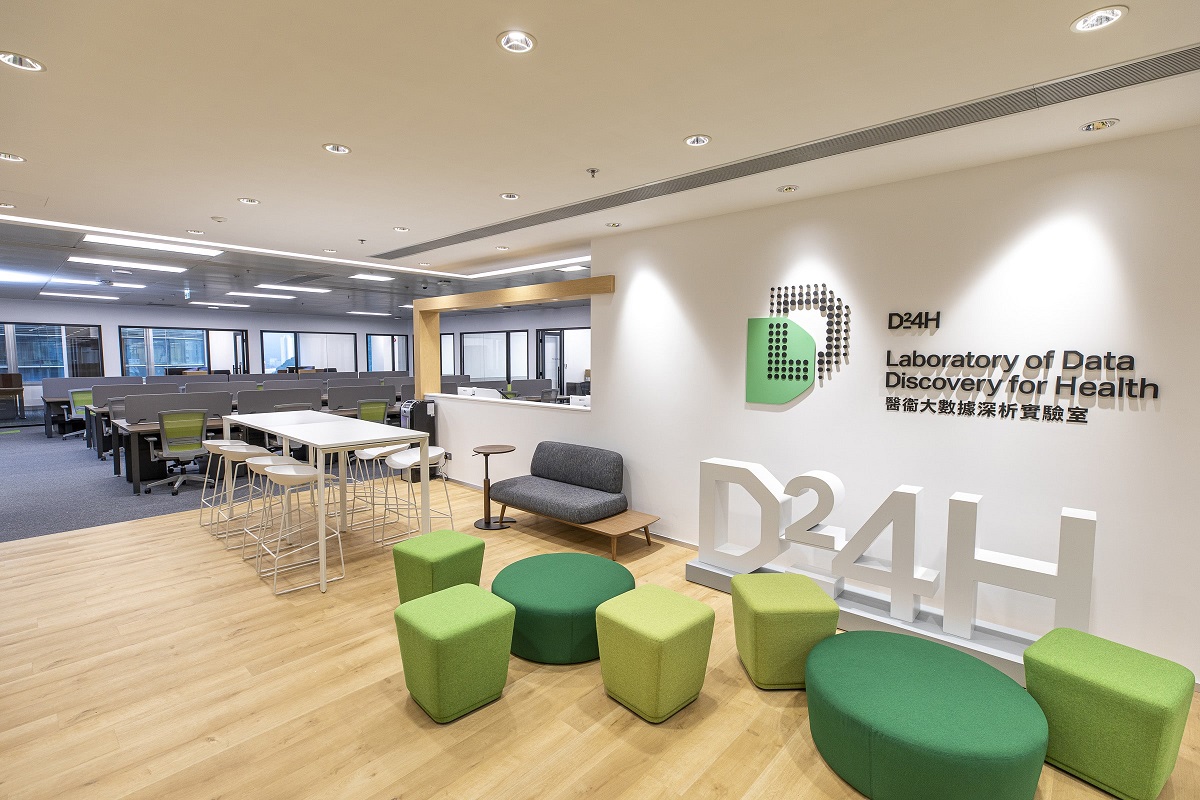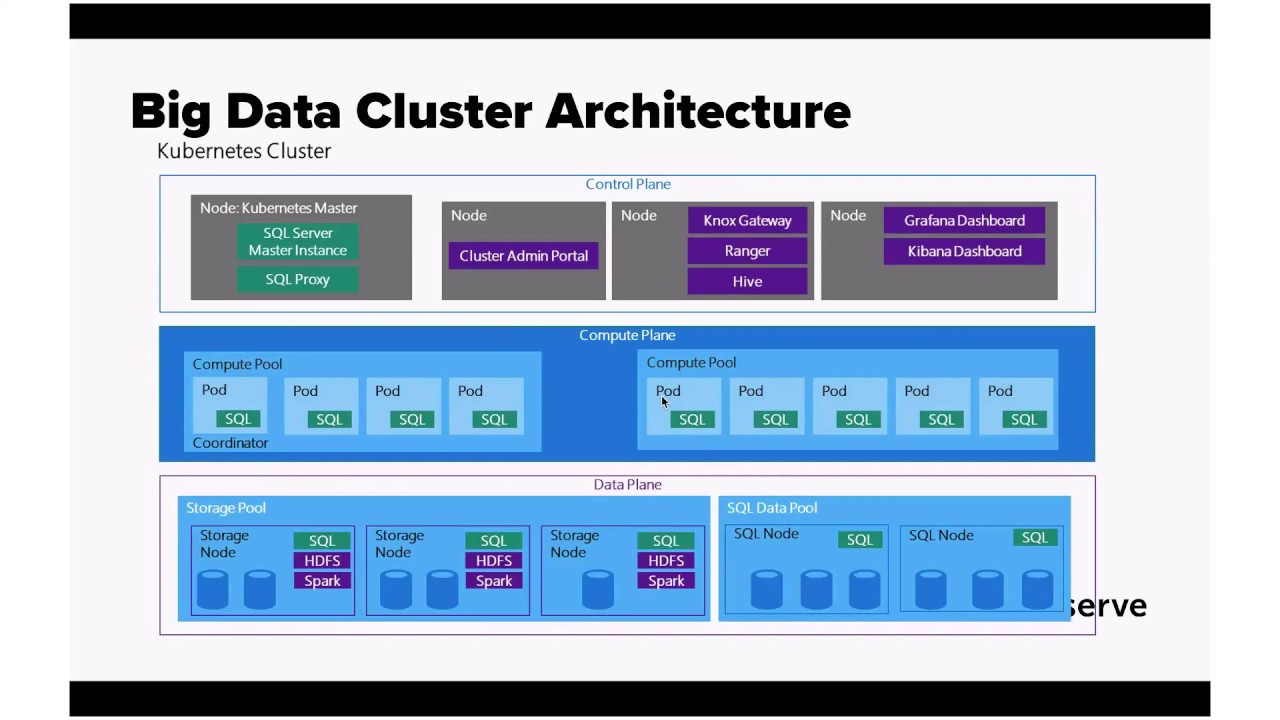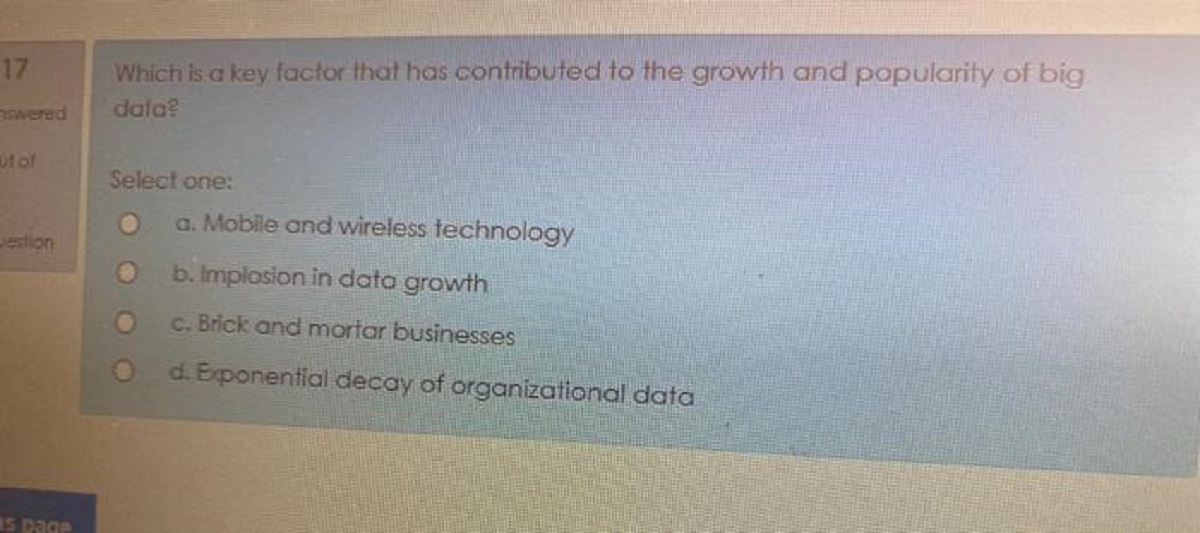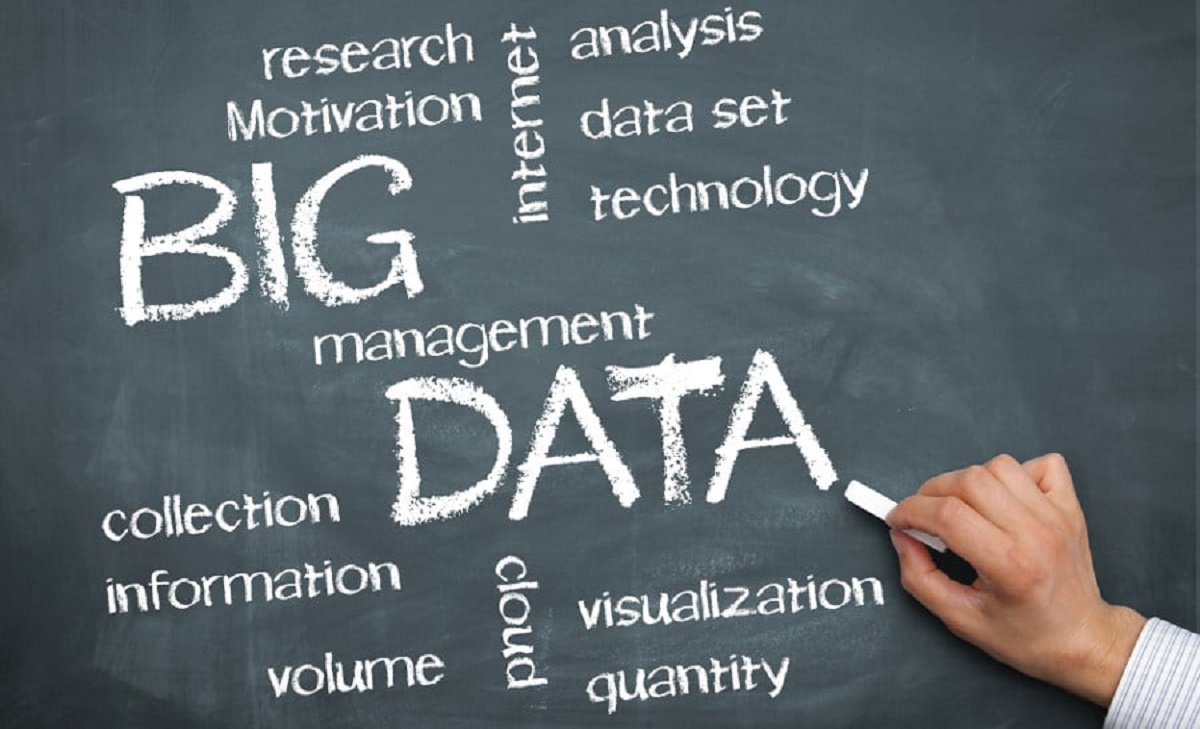Introduction
With advancements in technology and the exponential growth of data, industries across the board have been revolutionized, and the healthcare sector is no exception. The emergence of big data has provided healthcare professionals with an immense opportunity to leverage vast amounts of information for improving patient outcomes, enhancing research and development efforts, and optimizing overall healthcare delivery.
Big data refers to the large volumes of complex and diverse data that cannot be effectively managed and analyzed using traditional data processing techniques. It encompasses a wide variety of data sources, including electronic health records (EHRs), medical imaging, genomics, wearable devices, social media, and more. This data often comes in different formats, such as structured data (e.g., patient demographics) and unstructured data (e.g., clinical notes and images), posing unique challenges in terms of storage, analysis, and interpretation.
In the healthcare industry, big data analytics plays a crucial role in transforming the way healthcare providers, researchers, and policymakers operate. It enables them to gain deep insights into patterns, trends, and correlations that were previously inaccessible, facilitating evidence-based decision making and ultimately improving patient outcomes.
This article aims to explore the various ways in which big data is revolutionizing healthcare. We will delve into its impact on diagnostic accuracy, personalized medicine, drug research and development, public health surveillance, medical Internet of Things (IoT), predictive analytics for disease outbreaks, and patient care and experience. Additionally, we will also discuss some of the ethical considerations and challenges associated with the use of big data in healthcare.
By understanding the potential of big data in healthcare and the areas in which it can bring significant advancements, we can truly appreciate how this technology is changing the landscape of the medical field. From precision medicine to proactive disease prevention, big data has the power to transform the way healthcare is practiced, leading to improved patient outcomes, more effective treatments, and ultimately, a healthier population.
What is Big Data?
Big data refers to the vast and complex sets of data that cannot be easily managed, analyzed, and processed using traditional data processing techniques. The term “big data” encompasses not only the sheer volume of data but also the variety and velocity of data generation. It refers to the massive amounts of structured and unstructured data that is continuously produced by various sources such as electronic health records, medical devices, social media, sensors, and more.
The three key characteristics that define big data are volume, variety, and velocity.
– Volume: Big data refers to the extraordinary volume of data that is being generated. Traditional data processing methods are unable to handle such massive amounts of information. With advancements in technology, we are now capable of storing and processing petabytes and even exabytes of data.
– Variety: Big data consists of diverse types of data, including structured, semi-structured, and unstructured data. Structured data is organized and easily searchable, such as patient demographics or laboratory results. Unstructured data, on the other hand, does not have a predefined structure and includes text, images, videos, and social media posts. The ability to analyze and extract meaningful insights from both structured and unstructured data is one of the significant challenges of big data analytics.
– Velocity: Big data is continuously generated at an unprecedented speed. The fast-paced nature of data generation requires real-time analysis and processing to extract valuable insights and make timely decisions. The ability to process and analyze data in real-time is crucial in healthcare to enable early detection and intervention in critical situations.
Apart from the 3Vs, the concept of big data also encompasses the idea of veracity and value. Veracity refers to the accuracy, reliability, and trustworthiness of data, while value pertains to the usefulness and relevance of the insights derived from big data analytics.
The analysis of big data in healthcare offers incredible opportunities for healthcare providers, researchers, and policymakers. By leveraging advanced analytics techniques, such as machine learning and artificial intelligence, big data can help detect patterns, discover correlations, and uncover hidden insights that can drive better decision-making, improve patient outcomes, and enhance the overall quality of healthcare delivery.
Big Data in Healthcare: An Overview
The healthcare industry is no stranger to vast amounts of data. In fact, healthcare organizations generate and collect enormous volumes of data every day, ranging from electronic health records (EHRs) and medical imaging to genomic data and patient-generated data from wearable devices. With the advent of big data analytics, the healthcare sector has the potential to leverage this data for significant advancements in patient care, research, and public health.
Big data in healthcare offers several fundamental benefits. It enables healthcare providers to gain valuable insights into patient populations, identify trends and patterns, and make data-driven decisions to improve patient outcomes. It also plays a crucial role in enhancing research and development efforts and optimizing healthcare delivery.
One of the key applications of big data in healthcare is in enhancing diagnostic accuracy. Through the analysis of vast amounts of patient data, including medical histories, genetic information, and medical imaging results, healthcare providers can develop more accurate and precise diagnostic models. This, in turn, leads to early detection of diseases, personalized treatment plans, and improved patient outcomes.
Big data also allows for the advancement of personalized medicine and treatment. By analyzing large datasets of patient information, including genetic data, environmental factors, and lifestyle choices, healthcare professionals can tailor treatment plans specific to each patient’s individual characteristics. This approach not only improves treatment outcomes but also reduces medication errors and unnecessary interventions.
In drug research and development, big data analytics offers tremendous opportunities for accelerating the discovery and development of new medications. By analyzing large datasets of genomic information, clinical trial data, and patient response data, researchers can identify target populations, detect potential side effects, and streamline the drug development process. This enables the delivery of safer, more effective drugs to the market in a more efficient manner.
Big data also has a significant impact on public health surveillance. By monitoring and analyzing data from various sources, such as social media, surveillance systems, and emergency department records, healthcare organizations can detect disease outbreaks, track the spread of infectious diseases, and develop effective public health interventions. This timely information enables proactive measures to prevent the spread of diseases and protect the health of the population.
The rise of medical Internet of Things (IoT) devices and wearable technologies has further expanded the potential of big data in healthcare. These devices collect and transmit a vast amount of real-time patient data, including vital signs, physical activity levels, and sleep patterns. By analyzing this continuous stream of data, healthcare providers can monitor patient health remotely, detect anomalies, and intervene when necessary. This leads to improved patient care, reduced hospital admissions, and better management of chronic conditions.
Predictive analytics is another powerful application of big data in healthcare. By analyzing historical patient data, environmental factors, and other relevant variables, healthcare organizations can develop models to predict disease outbreaks and epidemics. This allows for early warning and preparedness measures to be implemented, contributing to better public health planning and response.
In summary, big data analytics is transforming the healthcare industry in significant ways. From enhancing diagnostic accuracy and enabling personalized medicine to improving public health surveillance and revolutionizing drug research and development, the potential of big data in healthcare is enormous. However, despite its immense benefits, the ethical considerations surrounding privacy, data security, and consent must be carefully addressed to ensure the responsible and effective use of big data in healthcare.
Enhancing Diagnostic Accuracy
One of the most significant contributions of big data in healthcare is its ability to enhance diagnostic accuracy. By leveraging vast amounts of patient data, including medical histories, genetic information, and medical imaging results, healthcare providers can develop more precise diagnostic models, leading to improved patient outcomes.
Traditionally, healthcare professionals relied on their clinical experience and available patient information to make diagnoses. However, this approach had limitations, as it relied on individual expertise and potentially overlooked subtle patterns and correlations within the data. With big data analytics, healthcare providers can analyze large datasets and identify intricate patterns that might be missed by human observation alone.
Through the application of machine learning and artificial intelligence algorithms, big data analytics can learn from vast amounts of patient data to make accurate predictions and assist in the diagnosis process. These algorithms can identify crucial indicators and risk factors that might not be immediately obvious, leading to earlier detection of diseases and more targeted treatments.
Furthermore, big data analytics can enable the development of personalized diagnostic models. Each patient is unique, and their response to diseases and treatments can vary. By analyzing individual patient data, including genetics, health history, lifestyle factors, and environmental influences, healthcare providers can tailor diagnostic approaches specific to the patient’s characteristics. This personalized approach allows for more accurate and effective diagnoses, minimizing misdiagnosis and unnecessary treatments.
Another area where big data plays a crucial role in diagnostic accuracy is in medical imaging. Medical imaging techniques, such as X-rays, MRIs, and CT scans, generate vast amounts of imaging data. Analyzing these images manually can be time-consuming and prone to errors. However, with big data analytics, machine learning algorithms can be trained to interpret medical images, making the diagnostic process faster, more accurate, and more consistent.
Moreover, big data analytics enables the fusion of multiple data sources for more comprehensive diagnoses. Integrating data from EHRs, genetic testing, wearable devices, and other sources provides a holistic view of the patient’s health. This integration allows healthcare providers to identify correlations and patterns that exist across different data domains, leading to more precise diagnoses and tailored treatment plans.
By leveraging big data analytics for diagnostic accuracy, healthcare providers can significantly improve patient outcomes. Early detection of diseases, accurate diagnoses, and personalized treatment plans ultimately lead to more effective interventions and better long-term health for patients.
Personalized Medicine and Treatment
One of the transformative applications of big data in healthcare is in the field of personalized medicine and treatment. Personalized medicine aims to tailor medical interventions and treatments to individual patients, taking into account their unique characteristics, genetic makeup, lifestyle factors, and environmental influences. Big data analytics plays a crucial role in achieving this objective by providing valuable insights and enabling the customization of healthcare approaches.
Traditionally, healthcare practices have often followed a one-size-fits-all approach, where treatments are based on general guidelines and population averages. However, every patient is different, and their response to diseases and treatments can vary significantly. By leveraging big data analytics, healthcare providers can gain deep insights into patient populations and identify individual patient characteristics that impact treatment outcomes.
Big data analytics enables the integration and analysis of various data sources, including electronic health records (EHRs), genetic data, lifestyle information, environmental data, and patient-generated data from wearable devices. This comprehensive view allows healthcare providers to develop a more precise understanding of each patient’s unique health profile and design personalized treatment plans accordingly.
Genomic data is a significant component of personalized medicine, and big data analytics plays a critical role in genomic analysis. By analyzing massive datasets of genomic information, researchers and healthcare providers can identify genetic variations, mutations, and biomarkers associated with specific diseases and treatment responses. This information enables the development of targeted and individualized therapies, minimizing adverse effects and optimizing treatment outcomes.
Additionally, big data analytics can assist in identifying patterns and correlations in the data to provide personalized treatment recommendations. Machine learning algorithms analyze vast amounts of patient data to uncover relationships between treatments, patient characteristics, and outcomes. This information can guide healthcare providers in selecting the most effective treatments for individual patients, increasing treatment success rates and reducing the risk of adverse reactions.
Furthermore, personalized medicine facilitated by big data analytics can also improve medication management. By analyzing patient data, including genetic factors, medical history, and response to previous medications, healthcare providers can select the most appropriate medications, dosages, and treatment durations for each patient. This not only improves treatment efficacy but also reduces medication-related complications and side effects.
Wearable devices and patient-generated data play a vital role in personalized medicine. These devices collect real-time data, such as vital signs, physical activity levels, and sleep patterns, enabling monitoring and customization of treatment plans based on individual patient needs. Big data analytics interprets this continuous stream of data to provide timely insights and recommendations for healthcare providers, influencing treatment decisions and promoting better patient outcomes.
In summary, big data analytics empowers personalized medicine and treatment by harnessing the vast amounts of data available in healthcare. By leveraging patient-specific information, genetic data, lifestyle factors, and real-time monitoring, healthcare providers can deliver tailored treatments that consider individual needs, optimize therapeutic interventions, and improve patient outcomes. As big data analytics continues to evolve, personalized medicine is poised to revolutionize healthcare, offering the promise of more targeted and effective healthcare interventions.
Drug Research and Development
Big data analytics has been instrumental in transforming the landscape of drug research and development. Traditional methods of discovering and developing new drugs are lengthy, costly, and often unpredictable. However, with the power of big data, researchers and pharmaceutical companies can accelerate the process, improve success rates, and deliver safer and more effective medications to the market.
In the realm of drug research, big data analytics enables the analysis of vast amounts of genomic data, clinical trial data, published research, and real-world evidence. By mining and integrating these diverse datasets, researchers can identify potential targets for drug intervention, discover new pathways, and gain insights into disease mechanisms. This information guides the development of new drugs and facilitates a more precise understanding of therapeutic targets.
One of the significant contributions of big data analytics in drug research is the identification of target populations. By analyzing large datasets of genomic information, clinical trial results, and patient data, researchers can identify specific genetic variations or biomarkers that are associated with disease susceptibility or treatment response. This precision allows for the development of targeted therapies that are more effective and have fewer adverse effects.
Additionally, big data analytics aids in optimizing the design and execution of clinical trials. By incorporating real-world evidence and patient data, researchers can identify eligible patients, better stratify patient populations, and design more efficient study protocols. This approach reduces the time and cost of clinical trials, increases enrollment rates, and improves the chances of successful outcomes.
The analysis of big data also plays a crucial role in drug safety and pharmacovigilance. By analyzing data from electronic health records, claims databases, and other sources, researchers can detect potential adverse events and drug interactions. This early identification and monitoring of safety concerns contribute to the development of safer medications and better management of medication risks.
Moreover, big data analytics can facilitate the repurposing of existing drugs. By analyzing vast amounts of data, including clinical trial results, patient data, and molecular information, researchers can identify new therapeutic indications for already approved drugs. This approach saves time and resources by bypassing the lengthy drug discovery process and repurposing drugs for new indications.
In recent years, big data analytics has also been utilized in the emerging field of precision medicine. Precision medicine aims to deliver targeted treatments based on a patient’s individual characteristics, genetic makeup, and environment. By integrating diverse datasets and applying advanced analytics techniques, big data enables the identification of personalized treatment strategies and the development of customized medication plans.
In summary, big data analytics has revolutionized drug research and development by leveraging vast datasets, advanced analytics techniques, and real-world evidence. From identifying therapeutic targets and optimizing clinical trials to improving drug safety and enabling precision medicine, big data has accelerated the discovery and development of new medications. As technology and data availability continue to expand, big data analytics holds the promise of more effective, personalized, and efficient drug research and development processes.
Public Health Surveillance
Big data analytics has revolutionized public health surveillance by providing timely and comprehensive insights into disease patterns, outbreaks, and population health. Through the analysis of diverse data sources, such as social media, electronic health records, surveillance systems, and environmental data, public health organizations can detect and respond to health threats more efficiently and effectively.
Traditionally, public health surveillance relied on manual reporting systems, which were often slow and limited in scope. However, with the advent of big data analytics, public health agencies can now access a wealth of real-time and near-real-time data to monitor disease trends, track the spread of infectious diseases, and identify high-risk populations.
One of the significant advantages of big data analytics in public health surveillance is its ability to analyze unstructured data sources, such as social media posts and other online platforms. By using natural language processing and sentiment analysis techniques, researchers can monitor online conversations about health-related topics, detect early signs of disease outbreaks, and identify areas of concern. This real-time surveillance allows for rapid response and containment measures to be implemented.
Furthermore, big data analytics enables the integration of data from various sources to create a comprehensive view of population health. By analyzing electronic health records, claims data, and other health-related information, public health organizations can identify patterns and risk factors associated with specific diseases. This information guides the development of targeted interventions, public health campaigns, and preventive measures to improve the health of the population.
In addition to traditional healthcare data sources, big data analytics also leverages non-traditional sources of data. For example, environmental data, such as weather patterns and pollution levels, can be analyzed in conjunction with health data to identify potential environmental factors contributing to disease outbreaks or health disparities. This integration of data across multiple domains provides a holistic understanding of the factors influencing population health.
Predictive analytics is another powerful application of big data in public health surveillance. By analyzing historical health data, environmental factors, and other relevant variables, researchers can develop models to predict disease outbreaks and epidemics. This early warning allows public health authorities to implement proactive measures, such as vaccination campaigns, targeted interventions, and resource mobilization, to control the spread of diseases and minimize their impact on the population.
Big data analytics also facilitates syndromic surveillance, which involves the monitoring of specific symptoms or syndromes to detect and respond to public health emergencies. By analyzing data from emergency departments, urgent care clinics, and other healthcare facilities, public health agencies can identify unusual spikes in symptom presentations, indicative of potential outbreaks or biological events. This real-time monitoring enables rapid response and containment measures to be initiated promptly.
In summary, big data analytics has transformed public health surveillance by harnessing the power of diverse data sources and advanced analytics techniques. By analyzing real-time and comprehensive datasets, public health organizations can detect disease patterns, track disease outbreaks, identify high-risk populations, and implement targeted interventions. As big data analytics continues to evolve, public health surveillance will become even more precise and effective, enabling proactive measures to protect and improve the health of populations.
Medical IoT and Wearable Devices
The rise of the medical Internet of Things (IoT) and wearable devices has transformed healthcare by providing real-time patient monitoring and valuable insights into individual health. By leveraging big data analytics, these devices offer tremendous opportunities for early detection, preventive care, and remote monitoring, ultimately leading to improved patient outcomes and quality of life.
Medical IoT refers to the network of interconnected medical devices, sensors, and systems that collect and transmit healthcare data. These devices can range from wearable fitness trackers and smartwatches to implantable devices and remote monitoring systems. The data collected by these devices, such as vital signs, physical activity levels, sleep patterns, and medication adherence, enables healthcare providers to monitor patient health in real-time and make proactive decisions based on the insights provided by big data analytics.
Wearable devices, in particular, have gained significant popularity for their ability to continuously monitor various health parameters. These devices can track heart rate, blood pressure, glucose levels, and even detect falls or irregularities in movement. The data collected by these devices is transmitted to cloud-based platforms, where big data analytics algorithms process and analyze the information to generate meaningful insights for healthcare professionals.
Big data analytics plays a crucial role in interpreting the vast amounts of data generated by medical IoT and wearable devices. These devices generate a continuous stream of data, often referred to as “big data,” which requires advanced analytics techniques to make sense of the information and extract valuable insights. By analyzing this data, healthcare providers can detect anomalies, identify trends, and make more informed decisions about patient care.
Remote patient monitoring is one of the significant applications of medical IoT and wearable devices empowered by big data analytics. Patients with chronic conditions or those in post-operative care can be equipped with wearable devices that continuously monitor their vital signs and transmit the data to healthcare providers. This real-time monitoring enables early detection of health issues, timely intervention, and personalized adjustments to treatment plans, minimizing hospital readmissions and improving overall patient well-being.
Furthermore, big data analytics allows for the aggregation and analysis of data from multiple patients, enabling population health management. By analyzing the data from wearable devices across a large population, healthcare providers can identify health trends, risk factors, and patterns that can inform public health initiatives and preventive measures. This population-level analysis contributes to the development of targeted interventions and policies aimed at improving health outcomes and reducing healthcare costs.
Another advantage of medical IoT and wearable devices is their ability to empower patient engagement and self-management. These devices provide patients with real-time feedback and personalized insights about their health, motivating them to take an active role in managing their well-being. By incorporating gamification and social features, wearable devices can promote healthy behaviors, encourage adherence to treatment plans, and foster a sense of community among patients with similar health conditions.
In summary, medical IoT and wearable devices, fueled by big data analytics, have revolutionized healthcare by enabling real-time patient monitoring, personalized health insights, and population health management. As technology continues to advance and the availability of wearable devices expands, these devices will play an increasingly prominent role in enhancing preventive care, empowering patients, and improving overall healthcare outcomes.
Predictive Analytics for Disease Outbreaks
Predictive analytics, powered by big data, is transforming the field of disease outbreak prediction and prevention. By leveraging vast amounts of data, including health records, environmental information, socioeconomic data, and real-time surveillance systems, predictive analytics enables healthcare organizations and public health agencies to anticipate and respond to disease outbreaks more effectively.
Traditionally, disease surveillance relied on manual reporting and reactive measures. However, with the power of predictive analytics, public health professionals can now proactively identify emerging health threats, assess their potential impact, and implement timely interventions to minimize the spread of diseases.
Big data analytics allows for the integration of various data sources, which enables the development of robust predictive models. By analyzing historical health data, such as previous disease outbreaks or epidemics, and incorporating current and real-time data, predictive analytics can identify patterns, correlations, and risk factors that are indicative of potential disease outbreaks.
One of the significant advantages of predictive analytics in disease outbreaks is its ability to forecast the spread of infectious diseases. By analyzing past outbreak data, population movement patterns, weather conditions, and other relevant variables, predictive models can estimate the future trajectory of diseases and predict areas at higher risk of experiencing outbreaks. This information is crucial in resource allocation, targeted interventions, and public health planning.
Moreover, big data analytics allows for rapid analysis and processing of large datasets, enabling near-real-time surveillance and detection of disease outbreaks. By continuously monitoring data from various sources, such as emergency department visits, laboratory reports, and social media, predictive analytics can identify early warning signs of potential outbreaks, thus enabling swift response and containment measures.
Predictive analytics can also aid in the prediction of disease hotspots and vulnerable populations. By analyzing demographic data, socioeconomic factors, and health records, healthcare organizations can identify areas that are at higher risk of disease outbreaks due to factors such as population density, low immunization rates, or lack of access to healthcare facilities. This proactive identification allows for targeted interventions and preventive measures to be implemented in these specific areas.
Furthermore, by leveraging big data analytics, public health agencies can optimize resource allocation during disease outbreaks. Predictive models can estimate the number of cases, hospital admissions, and required medical supplies, enabling health authorities to allocate resources efficiently and effectively. This ensures that the necessary resources are available in locations where they are most needed, mitigating the impact of outbreaks and saving lives.
In summary, predictive analytics powered by big data is revolutionizing disease outbreak prediction and prevention. By analyzing vast amounts of data, identifying patterns, and leveraging real-time surveillance, predictive models can forecast the spread of diseases, identify vulnerable populations, and optimize resource allocation. This proactive approach to managing disease outbreaks enables swift response, targeted interventions, and effective public health measures, leading to better control and containment of infectious diseases.
Improving Patient Care and Experience
Big data analytics plays a significant role in improving patient care and enhancing the overall healthcare experience. By harnessing the power of vast amounts of patient data, including electronic health records (EHRs), clinical notes, and real-time monitoring data, healthcare providers can make data-driven decisions, personalize treatments, and improve patient outcomes.
One of the key ways in which big data analytics enhances patient care is through clinical decision support systems. These systems use algorithms and machine learning techniques to analyze patient data, identify potential risks, and provide healthcare providers with evidence-based recommendations. By integrating patient-specific information, medical knowledge, and best practices, clinical decision support systems improve diagnostic accuracy, aid in treatment selection, and reduce medical errors.
Big data analytics also enables the real-time monitoring of patients’ health status and treatment progress. By analyzing data from wearable devices, sensors, and other monitoring systems, healthcare providers can continuously track vital signs, medication adherence, and other relevant metrics. Early detection of abnormalities or non-compliance allows for timely interventions, adjustment of treatment plans, and improved patient outcomes.
Personalized treatment plans are another significant outcome of big data analytics in patient care. By analyzing large datasets of patient information, including genetic data, medical history, and lifestyle factors, healthcare providers can tailor treatment options specific to each patient’s needs. This personalized approach considers individual variations, optimizing treatment effectiveness and reducing adverse effects.
Big data analytics also improves patient care by facilitating care coordination and continuity. By analyzing data from different healthcare providers and settings, such as primary care, specialists, and hospitals, big data analytics ensures that relevant and up-to-date patient information is shared across the continuum of care. This promotes better coordination, reduces duplicate tests and procedures, and enhances communication among healthcare providers, resulting in more efficient and comprehensive patient care.
Patient experience is another area significantly impacted by big data analytics. Patient feedback and satisfaction data, along with other patient-generated data, can be analyzed to identify areas for improvement and enhance patient-centered care. By understanding patient preferences, expectations, and experiences, healthcare providers can tailor services, improve communication, and deliver a more personalized and satisfactory healthcare experience.
Additionally, big data analytics enables predictive modeling in patient care. By analyzing historical patient data, including demographics, medical history, and treatment outcomes, predictive models can help identify patients at higher risk of developing specific conditions or complications. This information allows for targeted interventions, preventive measures, and proactive management of high-risk patients, ultimately improving patient outcomes and quality of life.
Furthermore, big data analytics can contribute to quality improvement efforts in healthcare. By analyzing aggregated patient data, healthcare providers can identify patterns and trends related to healthcare-associated infections, medication errors, and other quality indicators. This information guides quality improvement initiatives, leading to safer, more effective care delivery and better patient outcomes.
In summary, big data analytics has immense potential to improve patient care and enhance the overall healthcare experience. By enabling clinical decision support, personalizing treatment plans, facilitating care coordination, and incorporating patient feedback, big data analytics optimizes patient care delivery, improves patient outcomes, and promotes patient-centered healthcare. As technology continues to evolve, big data analytics will play an increasingly vital role in transforming healthcare into a more efficient, personalized, and patient-centric domain.
Ethical Considerations and Challenges
While big data analytics offers significant potential for improving healthcare, it also presents ethical considerations and challenges that need to be carefully addressed. As healthcare organizations and researchers harness the power of vast amounts of patient data, privacy, security, consent, and fairness become crucial concerns.
One of the primary ethical considerations of big data analytics in healthcare is patient privacy. The vast amount and variety of healthcare data make it essential to ensure that patient information is protected and used responsibly. Healthcare organizations must implement robust security measures to safeguard sensitive data and comply with privacy regulations, such as the Health Insurance Portability and Accountability Act (HIPAA) in the United States and the General Data Protection Regulation (GDPR) in the European Union.
Consent also plays a significant role in using patient data for big data analytics. It is crucial for healthcare providers and researchers to obtain informed consent from patients before using their data for research or analytics purposes. However, obtaining consent can be challenging in cases where the data being analyzed is de-identified or aggregated, as it may not be feasible to obtain individual patient consent for every possible use of the data.
Another ethical consideration is the potential for bias and discrimination in big data analytics. If the data used for analysis is not representative of the entire population or contains biases, it can lead to unfair or discriminatory outcomes in healthcare decision-making. Care must be taken to address data biases and ensure that the insights gained from big data analytics are fair and equitable for all patient populations.
Data quality and accuracy are critical challenges in big data analytics. The analysis is only as reliable as the data it is based on. Ensuring data accuracy, completeness, and standardization is essential for reliable insights. Data cleaning and validation processes are necessary to address potential biases, inconsistencies, and errors in the data used for analysis.
The interpretability of big data analytics also poses challenges in healthcare. As complex algorithms are used for analysis, it may be difficult for healthcare providers and patients to understand and interpret the insights and recommendations generated. Transparency and clear communication of findings and limitations are crucial to build trust and ensure that healthcare decisions are made in the best interest of patients.
Furthermore, the ownership and control of patient data are important ethical considerations. Patients should have control over their data, including the ability to access, modify, and consent to its use. Healthcare organizations and researchers must establish clear protocols and governance frameworks to ensure that patient data is handled responsibly and that individuals have control over how their data is used.
Lastly, the potential for data breaches and the misuse of patient data is a significant ethical concern. Healthcare organizations must invest in robust cybersecurity measures and data protection protocols to safeguard patient information from unauthorized access or misuse. Ensuring data security is crucial to maintain public trust and confidence in the use of big data analytics in healthcare.
In summary, while big data analytics holds great promise for improving healthcare, ethical considerations and challenges must be carefully addressed. Protecting patient privacy, obtaining informed consent, addressing biases, ensuring data quality, promoting transparency, and safeguarding against data breaches are essential for responsible and ethical use of big data in healthcare. As technology and analytics capabilities continue to advance, it is crucial to maintain ethical practices and maintain the balance between innovation and protecting patient rights and well-being.
Conclusion
Big data analytics has revolutionized the healthcare industry, offering immense opportunities for improving patient care, advancing research and development efforts, and enhancing public health. By leveraging vast amounts of data, big data analytics enables healthcare providers, researchers, and policymakers to gain valuable insights, make informed decisions, and drive positive changes in the field of healthcare.
Through enhanced diagnostic accuracy, healthcare providers can improve early detection and personalized treatment plans, leading to better patient outcomes. Big data analytics also plays a crucial role in drug research and development, accelerating the discovery of new medications and optimizing the drug development process. The application of big data in public health surveillance allows for proactive measures, rapid response, and effective disease outbreak management.
Medical Internet of Things (IoT) devices and wearable technologies provide real-time monitoring and personalized health insights, empowering patients and improving overall healthcare experiences. The integration of big data analytics in patient care results in clinical decision support systems, personalized treatment plans, care coordination, and improved patient outcomes. Additionally, predictive analytics enables forecasting, targeted interventions, and optimized resource allocation for effective disease prevention and management.
However, alongside these advancements, ethical considerations and challenges arise. Safeguarding patient privacy, obtaining consent, addressing biases, ensuring data accuracy, and promoting transparency are crucial elements in the responsible use of big data analytics in healthcare. Data security must also be prioritized to protect against potential breaches and misuse of patient information.
In conclusion, big data analytics has transformed healthcare by leveraging the power of data to drive advancements in patient care, research, and public health. By harnessing the potential of big data, healthcare professionals and organizations can make data-driven decisions, deliver personalized treatments, and improve health outcomes. However, it is essential to navigate the ethical considerations and challenges associated with data privacy, consent, bias, and data security to ensure the responsible and effective use of big data analytics in healthcare. As technology continues to evolve, big data analytics will continue to shape the future of healthcare, paving the way for more efficient, precise, and patient-centric healthcare practices.







